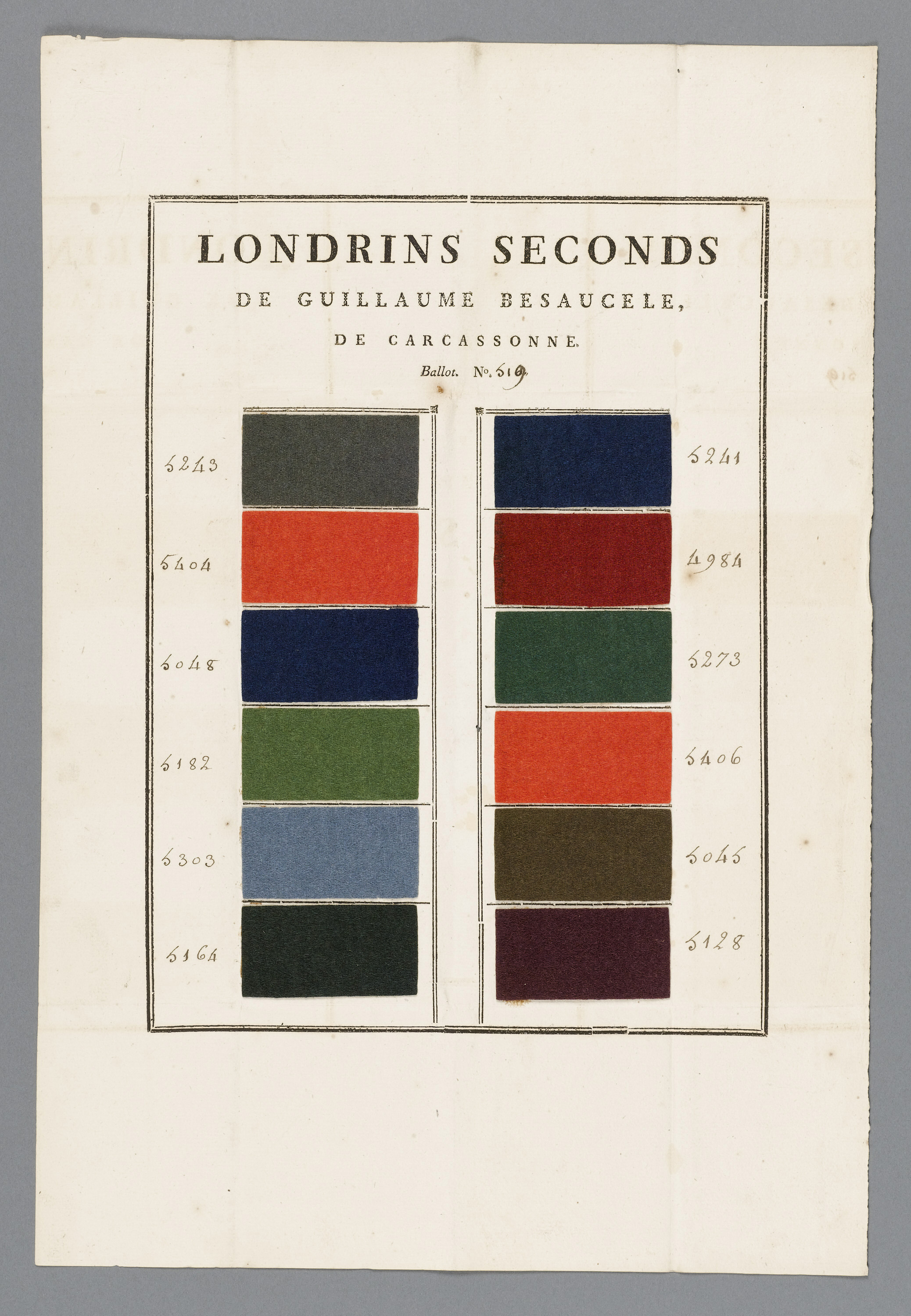Early in the eighteenth century, France was eager to imitate British success in exports of woolen textiles, especially to the Levant, an area roughly defined as a region of the eastern Mediterranean including Turkey and Egypt and points in between. By 1720, the French had vastly improved the quality of their woolens, and a system of strict grading for textiles insured uniformity year after year. Although londrins seconds – the name suggesting the dominance of British textiles – was not the most luxurious type of cloth available, the quality was above average for the price. By the 1730s, British woolens were no longer sold in the Levantine market as French woolens were the preferred cloth. The londrins seconds made in Carcassonne, the source of this sample card, proved especially popular in Istanbul for winter clothing, and France’s proximity to Turkey through the port of Marseille meant that French weavers could respond more quickly to fluctuations in demand and changes in fashionable colors. Sample cards like this one helped support the profitable French trade in export textiles to the Levant.
Tombstone
- Sample card, fulled wool on paper, 1700-1775, France, Gift of Alice B. Beer, 1951-158-8.
Collection Record
